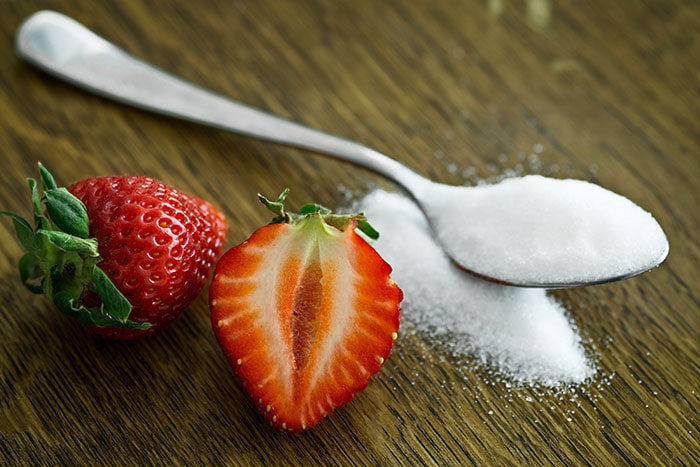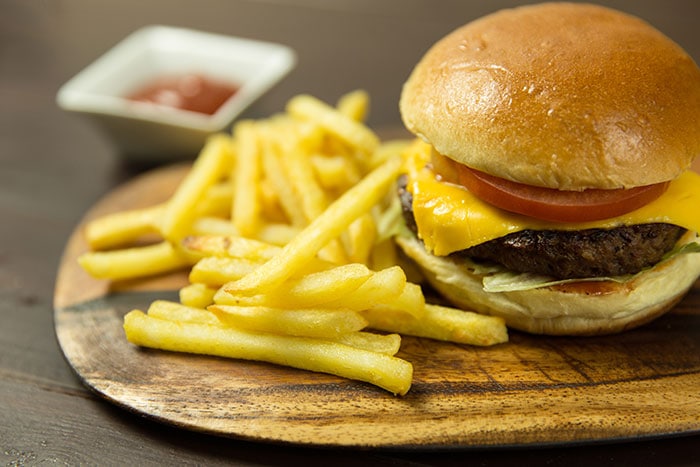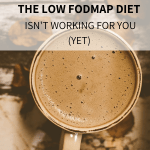
5 reasons why the FODMAP diet isn’t working for you (yet)
When you are following the elimination phase of the low FODMAP diet, your IBS symptoms should start to diminish after a while.
Up to a point where your symptoms are relatively under control. For most people, this takes about 2 to 6 weeks.
When you have your symptoms under control, you can start to reintroduce the FODMAP groups into your diet to see how you react to them.
But, you might also be following the low FODMAP diet for several weeks now and feel that you are still experiencing too many IBS symptoms.
Today I want to talk about things that might explain why you keep having IBS complaints even though you are eating low FODMAP.
There can be many different reasons for this, but I will explain the five causes that I hear most often.
1. You are eating too much sugar
Most kinds of sugar are low FODMAP, but that doesn’t mean you can eat sugar unlimited. Sugar is an IBS trigger and can give you problems when you eat too much of it.
Because of that I always advise limiting your serving size for sweet treats. Snacks that contain a lot of sugar, such as cake and cookies, often give complaints in larger amounts, also when it is a low FODMAP treat.
I personally notice a huge difference in my stomach if I eat a lot of foods with sugar in a day. Limiting sugar is something you could try if you keep having issues.
2. You eat too many products that are limited low FODMAP at a time
This is one of the most common mistakes on the low FODMAP diet.
Eating too many products that are limited low FODMAP at a time, such that the total amount of FODMAPs that you eat is too high. Also known as FODMAP stacking.
There are a few products that are free of FODMAPs, such as most meats and fish, and some kinds of vegetables. There are also foods that are limited low FODMAP.
If you eat less than a certain amount they are low FODMAP and when you eat more they are moderate or high in FODMAPs.
A mistake that is often made in the beginning is that people eat several products at a time that are limited low FODMAP and are in the same FODMAP group.
For example, sweet potato is low FODMAP up to 70 gram per portion.
If you eat more than 70 grams your serving contains too much mannitol and is not low FODMAP anymore. Celery is the same story.
10 grams is low FODMAP, if you eat more it becomes moderate in mannitol. If you put 70 grams of sweet potato and 10 grams of celery into one meal, the amount of mannitol for each vegetable separately is low FODMAP indeed.
But because you are eating them together the amount of mannitol in your meal is too high and that can give you problems.
This is one of the most complex things in the low FODMAP diet. In this blog, I talk about FODMAP stacking extensively and I explain how to avoid it.

3. You are overlooking FODMAPs in ingredient lists
Unfortunately, the ingredients of similar products can highly differ between brands. We can never say “all gluten-free bread is low FODMAP” because that entirely depends on the ingredients of the bread.
There are several kinds of gluten-free bread that are low FODMAP, but there are also many that have sneaky high FODMAP ingredients added to them, such as inulin or lupin.
See the blog “Why gluten-free isn’t always low FODMAP and vice versa” for more information about this. And the same goes for other foods. Because of this, it is important to always check the ingredient lists of products that you buy.
Otherwise, it is very likely that you will accidentally eat some high FODMAP foods when you don’t expect it. I have this happen to me sometimes when I am in the supermarket while in a hurry.
I just throw some foods into my cart and at home, I find out that one of the foods that I bought had fructose (or another FODMAP) on the ingredient list. Reading packages well before you eat something is very important.
4. Your portions are too big
Yes, I know, there are too many things that you have to think about when you have IBS, but this is also one of them.
When you have IBS, you don’t only have to think about what you eat, but also about how much you eat. If you eat too much, this can also trigger IBS symptoms.
I personally notice that I can do my very best to eat a low FODMAP meal, but when I overeat, I get bloated and have stomach pains whether my meal was low FODMAP or not.
This is very annoying, but it makes it important to limit the size of your low FODMAP meals.

5. You eat too many things that can trigger IBS symptoms
Next to things that are high in FODMAPs, there are other things that can trigger IBS complaints. I named sugar in the beginning of this blog post, but that is not the only thing.
Also (too much) coffee, deep-fried or very fatty food, sodas, and very spicy food can trigger IBS complaints.
The tolerance levels for these kinds of food differ per person. I personally notice that I tolerate larger amounts of “healthy fats” well but I cannot eat deep-fried products without problems.
One or two cups of coffee per day goes well, but if I have more I get bloated. Because of this, it is very important to find out for yourself if these things are also triggering you.
Do you recognize one of the things above? Might one of these things be the reason why you are still having issues? Or do you really feel like you are doing everything right, but you still have problems?
If the latter is the case, I advise you to ask for help from a certified dietician or your doctor.
Maybe there is something else next to FODMAPs that is triggering your complaints and if that is the case it is important to find out.
Together we go for a calm belly!
Subscribe to the Karlijn's Kitchen e-mail newsletter for more tips and recipes and receive the ebook 10 things I wish I had known when I started the FODMAP diet for free!


12 Comments
Some things to take into consideration for sure. It’s so tricky because I eat low fodmap and always check labels, but it’s those other things that can bother me. Stress, physical and emotional, really bother me no matter how well I’m doing with my eating.
Exactly Amanda – at this stage in my own horrible gut dysfunction journey, I believe that the main cause of IBS is the long term breakdown of the digestive system from stress; and any further stress just compounds it.
I have had IBS for close to 50 years. I first tried the FODMAP diet in my 40s. I was told to look it up on the internet and give it a try. I had debilitating pain and cramping with my IBS; that basically went away with a couple of weeks. I never became symptom free and recently tried the diet again, with a dietician. I have been very compliant with the diet (my husband is celiac and type 1 diabetic, so i know how critical it is), with no improvement. I would like to know more about the long term breakdown of the digestive system from stress, because i have had a lot of stressful situations to deal with and have chronic clinical depression, intermittent.
Hello Kat, your comment is getting through, I just have to approve it before it is visible on the blog 🙂
Insoluable fiber is another thing that triggers IBS for me. I find that most of my FODMAP cookbooks do not adequately cross reference their food lists and recipes with insoluable/soluable fiber Information. Heather Van Vorous’ books are a good resource for food fiber lists.
I live in the USA and we have different brands and terminology for food. I am confused about
Granola. Is it okay to eat on low FODMAP? Thanks
Depends on which granola you eat! Some gluten-free granolas or granolas with a basis of oats are low FODMAP, but definitely not all granolas. On my blog you can find several granola recipes: https://www.karlijnskitchen.com/en/?s=granola
Hi
Just wondering what is the best portion size for a meal ? I notice that if I eat too much I get stomach pain. If I eat too little u get hungry
Hi Edith, that is quite hard to say because every body is different and reacts different. I think the best thing you can do is try different portion sizes and see how you react. I also notice that I get more symptoms when I eat too much. So it is good to eat slowly, chew well and stop eating when you are full .
Thanks for such an awesome post. I’ve been in the elimination phase for about a year and am getting so much better at following it. I’ve made virtually all of these mistakes and kind of wish I’d known about portion sizes earlier. Also I’m so careful with ingredients but if I was eating a food (like grapes or celery) without incident before, it’s easy to then be shocked when I find out out was high fodmap in the amounts I was eating the whole time. Some foods don’t cause symptoms all at once but cause low level background symptoms that get louder every day you keep eating it.
Sorry but how can you say tomatoes are fodmap free when Monash University themselves have them on the red list for high fructose? All this poorly researched information on food blogs all over the internet really puts people’s success at risk.
Hi Alina, I am sorry, but when Monash University just made this change (tomatoes used to have the label FODMAP free in the Monash app before) I spent hours and hours checking and changing all the recipes and articles on my blog that mentioned tomatoes and bell peppers. Because they were mentioned in a lot of articles. I am doing my very best to keep all my information updated because I want to give people the right information. But sometimes I can miss a mention somewhere, so I find it quite a harsh judgement that you are making here.
But thank you for letting me know the mistake, I will change it here as well.